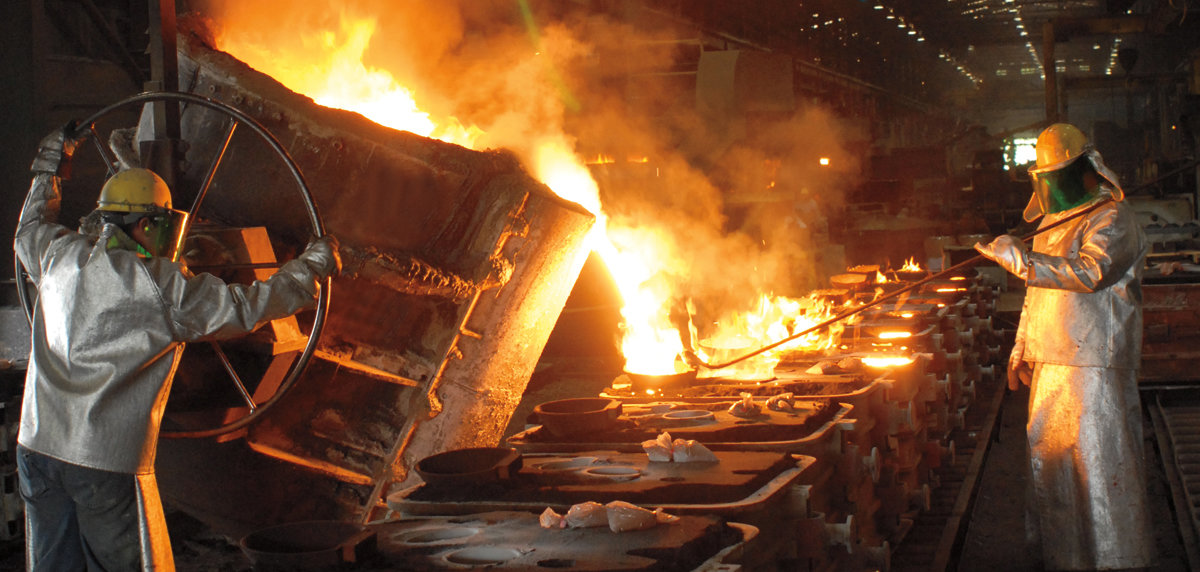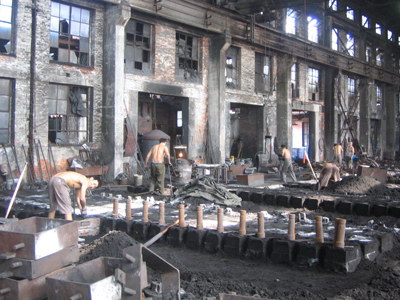What makes an Aluminum Foundry the best option for precision manufacturing
Unveiling the Complexities of Design and Manufacturing at a Metal Foundry
The design and manufacturing procedures at a metal foundry involve a series of detailed steps. Each phase, from choosing basic materials to melting and casting, plays a crucial duty in the end product. Metal Casting. Precision and quality control are paramount in this industry. As modern technology advances, new developments are arising. These growths might redefine traditional practices. What implications do these modifications hold for the future of steel foundries?
The Melting Process: Turning Raw Products Into Liquid Metal
The melting procedure serves as the crucial primary step in changing raw products right into fluid metal, a treatment necessary for foundry procedures. This phase starts with the mindful choice of metals, which might consist of aluminum, copper, or iron, depending upon the preferred end product. Each material is assessed for pureness and composition to guarantee optimal melting problems.

As the steels reach their melting point, they transform from solid to liquid, enabling further improvement. This procedure can additionally include the elimination of impurities via slag formation, ensuring the quality of the fluid metal. Inevitably, the successful conclusion of the melting process lays the foundation for succeeding metalworking operations.
Molding Techniques: Shaping Metal With Accuracy
Complying with the melting process, the next phase in metal foundry procedures entails molding techniques that shape the liquid steel right into preferred kinds. Different approaches are employed, each picked based on the certain needs of the job. Sand casting, one of the most usual strategies, makes use of a mix of sand and binder to create molds that can be conveniently formed and recycled. One more approach, investment casting, includes developing a wax pattern that is covered in a ceramic shell, enabling for elaborate layouts and high precision.
Pass away casting, in comparison, utilizes high-pressure to inject liquified metal right into steel mold and mildews, leading to uniform and resilient products. Furthermore, the option of molding method influences the cooling price, surface area finish, and dimensional precision of the end product. Subsequently, recognizing these strategies is necessary for maximizing layout and guaranteeing the successful production of steel components tailored to specific applications.
Casting Methods: From Model to Manufacturing
Numerous casting methods are used in steel factories to move from prototype advancement to full-scale production. Amongst these approaches, sand spreading stands out for its adaptability and cost-effectiveness, making it excellent for both huge and little manufacturing runs. Financial investment casting, known for its precision, is usually used for complex geometries, enabling fine information in the end product. Pass away casting, ideal for high-volume production, uses liquified metal injected right into molds, providing excellent surface area finish and dimensional precision.

High Quality Control: Ensuring Quality in Every Pour
While the spreading procedure can differ greatly in between approaches, keeping extensive quality assurance is vital to ascertain that every put satisfies the needed requirements. Quality control in a metal foundry includes a series of methodical checks and evaluations created to identify defects early in the manufacturing procedure. This includes careful examinations of resources, tracking of melting temperatures, and analyses of mold honesty.
Foundry employees use different testing strategies, such as non-destructive screening and dimensional confirmation, to identify that castings achieve preferred specifications. Additionally, adherence to established industry criteria and accreditations enhances the integrity of the end product.
Feedback loops are likewise important; any inconsistencies kept in mind during top quality evaluations are analyzed to fine-tune processes and mitigate future errors. Ultimately, a society of quality control cultivates not just customer contentment however also a reputation for check it out quality in the competitive landscape of metal production.
Innovations and Technologies: The Future of Metal Foundries
The landscape of steel foundries is swiftly progressing, driven by advancements in modern technology and innovative methods. Automation and robotics are changing traditional operations, improving effectiveness and accuracy during manufacturing. Automated pouring systems and robot arms minimize human error, resulting in better outputs. Additionally, the assimilation of expert system is making it possible for anticipating maintenance, maximizing tools performance, and reducing downtime.
Additive manufacturing is emerging as a game-changer, permitting for rapid prototyping and the production of intricate geometries that were formerly unattainable. This innovation facilitates the personalization of metal parts, satisfying particular client requirements without considerable dead time.
Sustainability is likewise a crucial emphasis, with shops adopting greener techniques, such as reusing scrap steel and making use of energy-efficient heaters. These advancements not only improve productivity yet additionally line up with worldwide efforts towards eco liable production, ensuring the future of steel shops stays competitive and durable in a transforming industrial landscape.
Frequently Asked Questions
What Types of Metals Are Frequently Utilized in Factories?
Common steels used in foundries consist of aluminum, cast iron, bronze, brass, and steel (Aluminum Foundry). Each steel has unique properties, making them appropriate for different applications in sectors like great site vehicle, aerospace, and building, among others
How Do Shops Take Care Of Waste and Environmental Impact?
Shops handle waste and environmental effect by executing recycling programs, using sophisticated filtering systems, and adhering to strict regulative criteria. They often buy sustainable modern technologies to minimize emissions and promote liable resource usage throughout their operations.
What Security Actions Are in Place for Employees?
Factories execute different safety steps for employees, consisting of individual protective devices, correct ventilation systems, routine safety and security training, emergency action methods, and rigorous adherence to occupational wellness guidelines to decrease dangers connected with hazardous materials and devices.
How much time Does the Whole Manufacturing Refine Normally Take?
The whole manufacturing process typically takes a number of weeks, relying on the intricacy of the layout and the products made use of. Factors such as mold and mildew prep work, melting, and cooling time considerably affect the total period of production.
What Are the Key Challenges Dealt With by Metal Factories Today?
Metal shops today deal with obstacles such as increasing material costs, rising and fall need, environmental policies, knowledgeable labor lacks, and preserving quality assurance. These issues complicate production efficiency and profitability in a significantly open market.
The layout and production processes at a metal foundry entail a series of intricate steps. The melting procedure offers as the vital initial step in transforming raw materials why not find out more into liquid metal, a procedure crucial for foundry procedures. Adhering to the melting procedure, the next stage in steel foundry operations entails molding strategies that shape the liquid steel into desired kinds. Many casting methods are employed in metal foundries to move from prototype growth to full-blown manufacturing. Quality control in a metal foundry incorporates a series of methodical checks and assessments designed to recognize problems early in the manufacturing process.